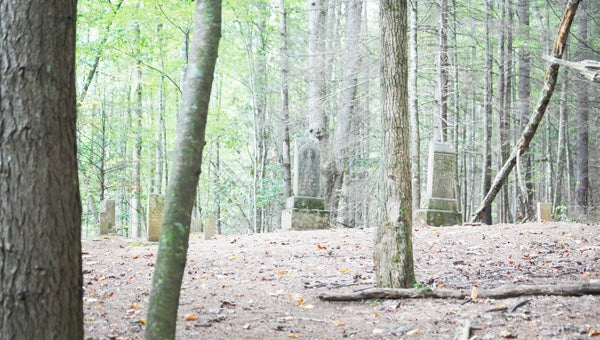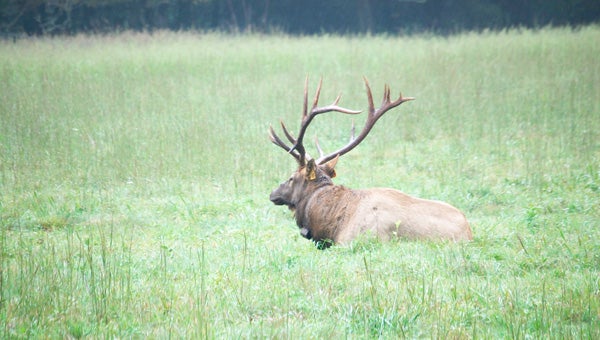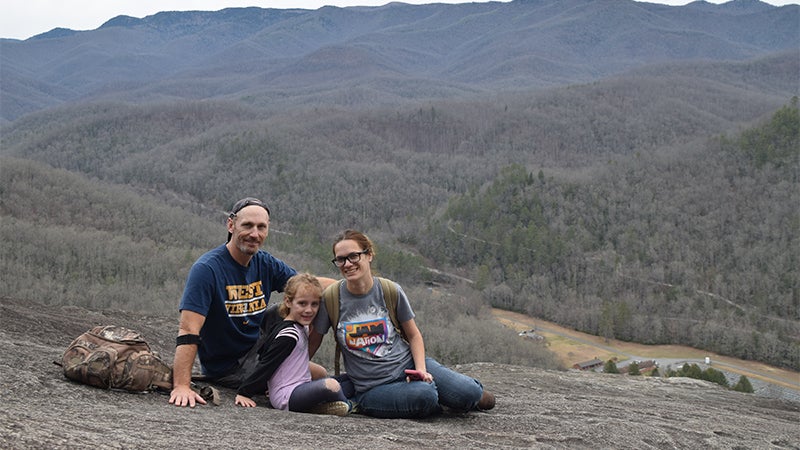Exploring historic and remote Cataloochee Valley
Published 5:47 pm Wednesday, October 5, 2011

Headstones sit in a wooded graveyard in the Cataloochee Valley. At one time more than 1,200 people called the area home. (photo submitted by Rob McComas)
As you top the mountain and start down the other side, a single lane dirt road winds you into a remote valley that gives you the sense that you have stumbled upon a lost and forgotten part of the country.
And as you travel down the base of the valley, you feel the remoteness of the area is what kept such a beautiful area from ever being inhabited.
It’s hard to believe that the secluded Cataloochee Valley, which consists of some very green fields, a small church, a schoolhouse and a couple of old farmhouses that are all now vacant, was once the place more than 1,200 people called home.
There are many things to do in the valley. Of course at the top of my list is fishing the wild trout streams. Cataloochee Creek is the main stream flowing thru the valley, but it is fed by creeks like Palmer Creek and little Cataloochee Creek.
The Cataloochee is loaded with wild rainbows. It flows down to Waterville Lake where it is said some of the lake’s brown trout run up the Cataloochee to spawn.
There are several trails to hike, including the Boogerman trail, which has some old growth trees along its path. The Rough Fork trail, Pretty Hollow, and the Cataloochee divide trail are also options.
I’ve noticed one of the biggest “mistakes” folks make when hiking is they keep their eyes on the ground just a few feet in front of them, almost like they are caught up in the walking part of the hike and not the surroundings. While I guess there is some balance and common sense in looking where you walk, getting your eyes off the trail to your surroundings is the best part of the experience. There are a lot of interesting and beautiful things people walk right by never even knowing what they just passed.
As you walk on some of these trails, you may notice what looks like cow trails crossing them. These deep rutted trails are worn in the ground by elk. You may also see from time to time a “rub” tree that the elk rub their antlers against to mark their territory.
Camping and horseback riding is a popular thing to do in the valley. The primitive campground has 27 sites. You can also camp at one of the backcountry campsites, but you must have a permit. Horse campsites are also available. Experiencing the backcountry via horseback is a nice way to take in the area.
Elk
Without a doubt, the big draw today to the Cataloochee Valley is the elk herd. Reintroduced to the area in February 2001, the elk herd has grown from 25 to now approximately 140. Native to the area, elk thrived here for centuries until the loss of habitat and over-hunting caused them to disappear here in the late 1700s.
The elk stocking was an experimental release to see how well they could adapt. Because of its success, the elk project is a long-term management program.
These are big critters. Weighing as much as 700 pounds, they dwarf the common whitetail deer in comparison. And the antlers do as well, with spans of nearly 5 feet.
September and October are excellent times to see the elk in the bottoms that run along Cataloochee Creek. Early morning, rainy days, and especially late evenings, are peak times to view the herds.
If you happen to be there at the right time, you may get to hear the males bugle, a very distinct call the males make to attract the cows and challenge the other males. This sound can travel a mile or more. The best time to hear the males bugle is mid to late September, and some in early October.
You will probably notice many of the elk wearing collars; these are to help keep track of their location and to help manage the herd.
The road along the bottoms is very similar to the Cades Cove area of the Great Smoky Mountains National Park. The main difference is it is a dead end road as opposed to a loop road. Be sure you travel the entire road through the valley – you can see several different herds of elk in a single evening.
You can also see turkeys, foxes and maybe even a black bear.
Signs of the past
The once thriving area is actually comprised of three valleys, surrounded by mountains more than 5,000 feet high. It’s hard to believe that a place such as this once had two post offices, a school and two churches. The big Cataloochee valley, which is the main part of the area, is the site of the Palmer Chapel Methodist Church. The Beech Grove School is also located there.
Apple farming seemed to be the main way to earn a living in the valley, as well as raising cattle and turkeys. The area seemed to be good for hunting and trapping as well. Toward the end of settlement in the valley, and nearing the dawn of the national park, people in the valley housed folks who traveled there to hunt the area.
Folks also came to the area drawn by the mineral-rich springs, which were thought to have healing qualities. A few of the homes still stand. Most were built as log homes that are now covered by white lap siding.
You will notice a rather unusual occurrence with their small family graveyards. They were not conveniently located in the back yard where they could be easily maintained, but rather were located high up on the ridges that overlook the valley. It seemed like the steeper the hill the better. There are trails that lead to the graveyards, but be prepared for a rather short but very steep hike.
How to get there
To get to the Cataloochie Valley, take I-26 west to I-40 west, travel to exit 20 (Hwy. 276), take 276 north about 1/10 of a mile and turn on Cove Creek Road. This is a narrow winding dirt road most of the way, so don’t be in a rush. There are a lot of trucks with horse trailers on this road at times. After you cross over the top of the mountain, travel down the other side until it turns to pavement.
You can easily spend an entire day or several days in the valley, but at least travel there for an evening and check out the elk herds and the old homes and buildings that are easy to access.
Be sure to bring a camera, binoculars or whatever you choose to give yourself some “zoom” power. It is against the law to approach or harass the elk. Folks are encouraged to stay near the road.
The Cataloochee Valley is one of the many cool places to check out here in our own mountains.
Rob McComas is a licensed North Carolina fishing guide on Lake Lure and Lake Jocassee in S.C. He has been a guide for 11 years and fishing for more than 30. McComas lives with his wife, Amanda, in Sunny View and runs Rob’s Guide Service. He can be reached at robsguideservice@gmail.com.



